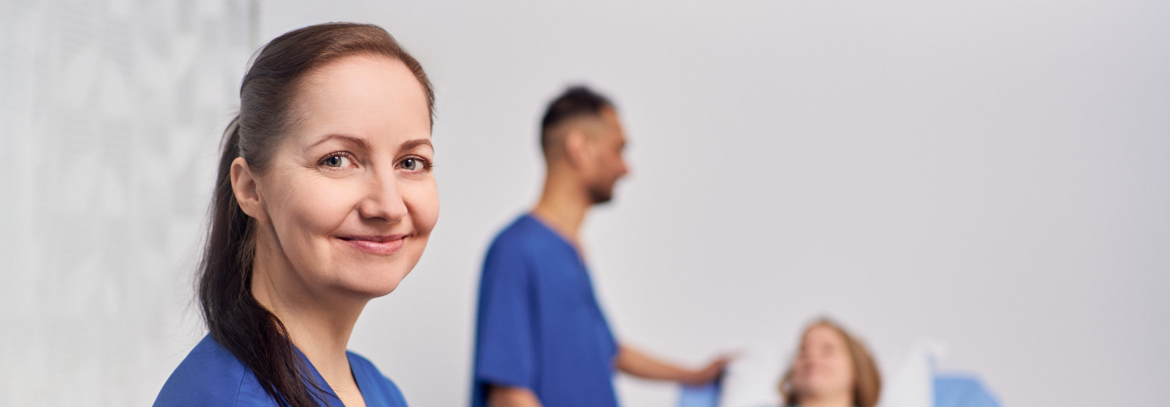On the Medanets User Days, Lisa Ward, Associate Director of Nursing and Chief Nursing Information Officer, and Claire Stocks, Early Detection & Resuscitation Lead Nurse from the County Durham and Darlington NHS Foundation Trust (CDDFT), told us about their digital journey. The key lessons learnt were as follows.
Drivers for adoption: Then
As the CDDFT have embraced digital tools to drive safety, efficiency and experience in nursing care, their focus has never been on these tools per se. Rather, it has been all about improvement in patient safety and quality of care. ‘We see something we want to improve and use data and digital tools to do it’, Lisa Ward and Claire Stocks summarise the way they work at the CDDFT.
Patient safety: Through the adoption of a digital electronic observation process, the organisation has seen a 50 % reduction in cardiac arrests
During the last 10 years, the incidence of cardiac arrest per 1000 admissions has seen a consistent decrease thanks to a large-scale organisational change and comprehensive adoption of digital tools that help to prevent these severe complications. The figures the CDDFT can present are impressive – the introduction of electronic observations on mobile in 2015 brought about a reduction in cardiac arrests by 14 % in the first year alone.
Seven years later, the reduction is close to 50 %. Nowadays, on average 1.2 million sets of National Early Warning Score observations are recorded on mobile every year, which amounts to over 8 million sets of observations recorded with NEWS since the project’s go live.
Drivers for adoption: Future
Patient safety remains the key driver in their digital strategy moving forwards. The organisation decided to adopt a core Electronic Health Record (EHR), but one of the non-negotiable requirements in their digital transformation journey was that they would not lose their patient safety gains achieved through the adoption of mobile solutions in the past.
Safety improvements must be maintained and built upon
First and foremost, they determined that all patient safety gains made since 2015 must be maintained and built upon – it would be unacceptable to take a backward step and see a rise, for example, in the cardiac arrests that have consistently decreased. Also, the new solution must maintain the existing level of mobility, integrating fully to the EHR, essentially being part of it.
Mobility for us isn’t just about the nurses ‘liking’ it. It needs to enable us to be more efficient in our work in the context of the current NHS.
Lisa Ward, Associate Director of Nursing and Chief Nursing Information Officer, and Claire Stocks, Early Detection & Resuscitation Lead Nurse
Digital equality as the next challenge
While nursing practices have been developed and digitised comprehensively at the CDDFT in the last years, digital systems used by medical colleagues have not managed to keep up the same pace. ‘Our doctors absolutely need an equality in digital systems. Yet, our nurses absolutely must not feel that they are short-changed in the process. This was another important factor for us when deciding on our next mobile partner.’
